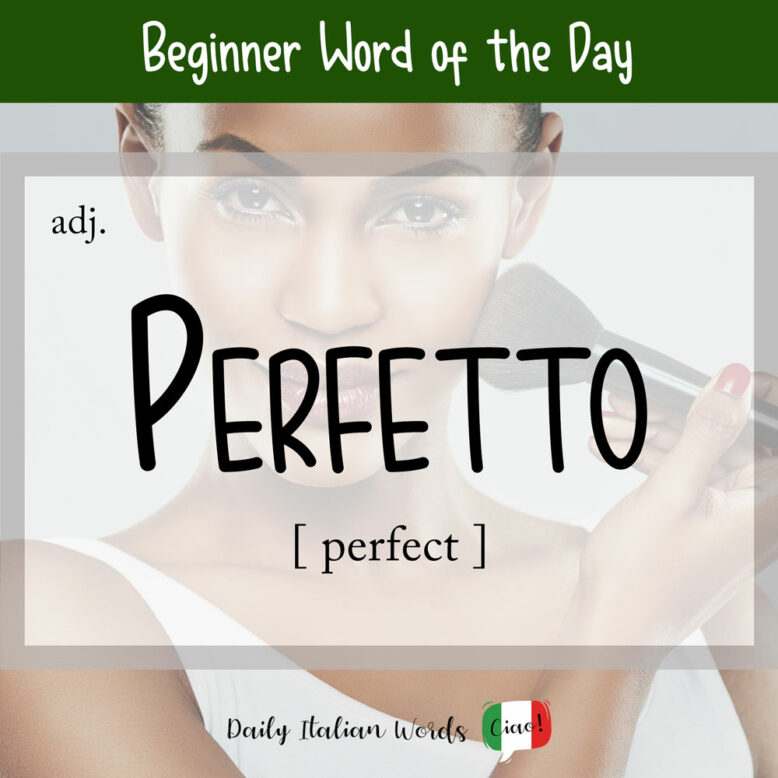Many nouns and adjectives that end in -ct in English take the ending -tto in Italian. This includes words like oggetto (object), architetto (architect) and our “word of the day” perfetto (perfect).

However, unlike English, the ending of perfetto changes depending on how many subjects are involved (singular versus plural) and the gender of the subject (masculine versus feminine).
- perfetto = masculine, singular
- perfetta = feminine, singular
- perfetti = masculine, plural
- perfette = feminine, plural
Questo appartamento è perfetto per una giovane coppia.
This apartment is perfect for a young couple.
Sto cercando il regalo perfetto per mia moglie.
I’m looking for the perfect present for my wife.
Although perfetto tends to come after the noun it describes, it may also come before, in which case complete usually works as a better translation than perfect.
Quel tipo è un perfetto imbecille!
That guy is a complete imbecile!
Il monaco ha iniziato a meditare in perfetto silenzio.
The monk started to meditate in complete silence.
Perfetto can be used as an adjective to describe something that is flawless or excellent, as in the example above, or it can be used on its own as an exclamation in reaction to something positive or agreeable.
Ci vediamo per cena alle sette domani? – Sì, perfetto!
Shall I see you tomorrow at seven for dinner? – Yes, perfect!
Some useful words that are related to perfetto include:
- perfezione = perfection
- perfezionare = to perfect
- perfettamente = perfectly
- perfezionamento = improvement, enhancement
- perfezionista = perfectionist
- perfezionismo = perfectionism
- perfettibile = perfectible
- perfezionarsi = to perfect/improve oneself
Heather Broster is a graduate with honours in linguistics from the University of Western Ontario. She is an aspiring polyglot, proficient in English and Italian, as well as Japanese, Welsh, and French to varying degrees of fluency. Originally from Toronto, Heather has resided in various countries, notably Italy for a period of six years. Her primary focus lies in the fields of language acquisition, education, and bilingual instruction.


